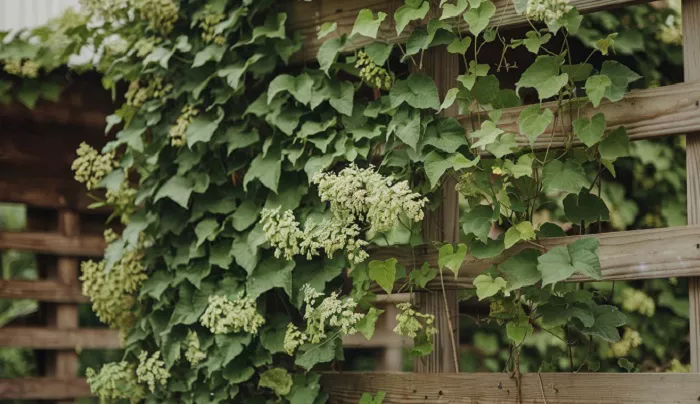Vines are nature’s artists, gracefully weaving their way through gardens and landscapes. They add a touch of elegance and charm to any space, transforming ordinary areas into enchanting retreats. Whether you’re looking to cover a trellis, drape over a wall, or create a lush canopy, vines offer endless possibilities. Their versatility and beauty make them a favorite among gardeners, and understanding their types can help you choose the perfect vine for your garden.
Understanding Vines: Nature’s Climbers
The Basics of Vines
Vines are a diverse group of plants that have adapted to climb or trail. Unlike trees or shrubs, they lack rigid stems and rely on support structures to grow upwards. This unique growth habit allows them to reach for sunlight, often covering large vertical spaces. Vines can be deciduous or evergreen, flowering or non-flowering, and they come in a wide range of sizes and forms. Their ability to transform spaces makes them an essential addition to any garden.
Types of Vines Based on Growth Habits
Vines can be categorized based on how they climb. Some use tendrils to grasp onto supports, while others twine around structures or have aerial roots that cling to surfaces. Understanding these growth habits can help you choose the right vine for your garden’s needs.
Tendril Climbers
Tendril climbers are fascinating to observe. These vines have specialized structures called tendrils that act like tiny hands, reaching out and wrapping around supports. Examples include the classic grapevine and the delicate passionflower. They are perfect for trellises and arbors, as their tendrils can easily grip onto the framework.
Twining Vines
Twining vines are known for their coiling stems. They naturally twist around supports, creating a spiral pattern as they grow. Clematis and honeysuckle are popular twining vines. They are ideal for covering pergolas or climbing up poles, adding vertical interest to your garden.
Clinging Vines
Clinging vines have aerial roots or adhesive pads that allow them to attach themselves to walls and other vertical surfaces. Ivy and climbing hydrangea are excellent examples. They can transform a plain wall into a living tapestry, providing both beauty and insulation.
Types of Vines Based on Appearance
Vines also vary in their appearance, from lush foliage to stunning flowers. Choosing a vine based on its aesthetic appeal can enhance the visual impact of your garden.
Flowering Vines
Flowering vines are the stars of the garden. They produce beautiful blooms that add color and fragrance. Wisteria, with its cascading clusters of flowers, is a favorite for its dramatic effect. Jasmine, on the other hand, is prized for its sweet scent. These vines can turn a simple garden into a fragrant paradise.
Foliage Vines
Foliage vines are all about the leaves. They offer a variety of leaf shapes, sizes, and colors. Virginia creeper, with its vibrant red autumn foliage, is a great choice for seasonal color. Pothos, with its heart-shaped leaves, is perfect for indoor or shaded areas. These vines provide texture and visual interest without the need for flowers.
Types of Vines Based on Purpose
Vines can serve various purposes in the garden, from providing shade to creating privacy screens. Knowing the purpose of the vine can help you select the right one for your needs.
Shade-Providing Vines
If you need to create shade in your garden, certain vines can be very effective. Climbing figs, with their large leaves, can cover a pergola and provide cool shade on hot summer days. Kiwi vines also offer dense foliage that can block out the sun.
Privacy Vines
For those looking to create a natural privacy screen, vines are a great solution. Evergreen vines like star jasmine can cover fences and walls, providing year-round coverage. They are an attractive alternative to more rigid barriers.
Caring for Vines
No matter the type of vine, proper care is essential for healthy growth. Most vines require well-drained soil and regular watering, especially during their establishment period. Pruning is also important to control their growth and shape. Some vines may need additional support, such as tying them to a trellis, to ensure they climb properly.
Choosing the Right Vine for Your Garden
When selecting a vine, consider your garden’s conditions and your goals. Think about the amount of sunlight, the type of support structure, and the desired effect. Whether you want a flowering vine to attract pollinators or a foliage vine for a lush backdrop, there is a vine that will fit your needs.
Conclusion
Vines are versatile and beautiful additions to any garden. From their unique growth habits to their diverse appearances, they offer endless possibilities. By understanding the different types of vines and their needs, you can enhance your garden with these climbing wonders. So, why not add a vine to your garden and let it weave its magic?


